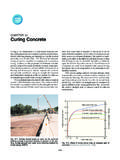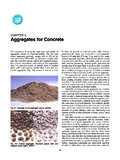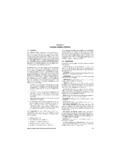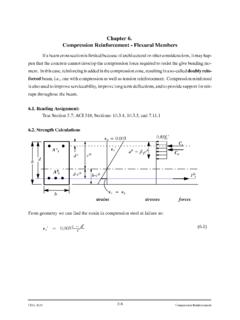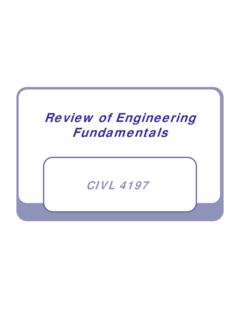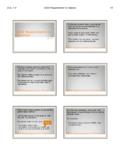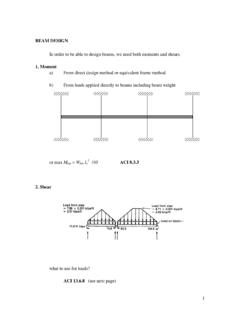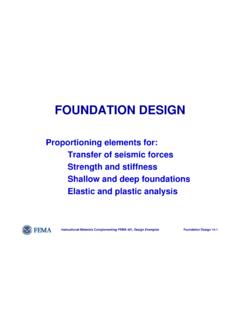Transcription of Structural Dynamics of SD of Systems Notes - Memphis
1 FEMA 451B Topic 3 NotesSlide 1 SDOF Dynamics3 -1 Instructional Material ComplementingFEMA 451, Design ExamplesStructural Dynamics ofLinear Elastic Single-Degree-of-Freedom (SDOF) SystemsThis set of slides covers the fundamental concepts of Structural Dynamics of linear elastic single-degree-of-freedom (SDOF) structures. A separate topic covers the analysis of linear elastic multiple-degree-of-freedom (MDOF) Systems . A separate topic also addresses inelastic behavior of structures. Proficiency in earthquake engineering requires a thorough understanding of each of these 451B Topic 3 NotesSlide 2 SDOF Dynamics3 -2 Instructional Material ComplementingFEMA 451, Design ExamplesStructural Dynamics Equations of motion for SDOF structures Structural frequency and period of vibration Behavior under dynamic load Dynamic magnification and resonance Effect of damping on behavior Linear elastic response spectraThis slide lists the scope of the present topic.
2 In a sense, the majority of the material in the topic provides background on the very important subject of response spectra. FEMA 451B Topic 3 NotesSlide 3 SDOF Dynamics3 -3 Instructional Material ComplementingFEMA 451, Design ExamplesImportance in Relation to ASCE 7-05 Ground motion maps provide ground accelerations in terms of response spectrumcoordinates. Equivalent lateral force procedure gives base shear in terms of design spectrumand period of vibration. Response spectrum is based on 5% critical dampingin system . Modal superposition analysis uses design response spectrumas basic ground motion relevance of the current topic to the ASCE 7-05 document is provided here.
3 Detailed referencing to numbered sections in ASCE 7-05 is provided in many of the slides. Note that ASCE 7-05 is directly based on the 2003 NEHRP Recommended Provisions for Seismic Regulations for New Buildings and Other Structures, FEMA 450, which is available at no charge from the FEMA Publications Center, 1-800-480-2520 (order by FEMA publication number).FEMA 451B Topic 3 NotesSlide 4 SDOF Dynamics3 -4 Instructional Material ComplementingFEMA 451, Design ExamplesIdealizedSDOF StructureMassStiffnessDampingFt ut(), ()tF(t)tu(t)The simple frame is idealizedas a SDOF mass-spring-dashpot model with a time-varying applied load. The function u(t)defines the displacement response of the system under the loading F(t).
4 The properties of the structure can be completely defined by the mass, damping , and stiffness as shown. The idealization assumes that all of the mass of the structure can be lumped into a single point and that all of the deformation in the frame occurs in the columns with the beam staying rigid. Represent damping as a simple viscous dashpot common as it allows for a linear dynamic analysis . Other types of damping models ( , friction damping ) are more realistic but require nonlinear 451B Topic 3 NotesSlide 5 SDOF Dynamics3 -5 Instructional Material ComplementingFEMA 451, Design ExamplesFt()ftI()ftD()05.()ftS05.()ftSFt f tf tf tIDS()()()() =0ft f t f t FtIDS()()()()++=Equation of Dynamic EquilibriumHere the equations of motion are shown as a force-balance.
5 At any point in time, the inertial, damping , and elastic resisting forces do not necessarily act in the same direction. However, at each point in time, dynamic equilibrium must be 451B Topic 3 NotesSlide 6 SDOF Dynamics3 -6 Instructional Material ComplementingFEMA 451, Design , in/sec2 Velocity, in/secDisplacement, inApplied Force, kipsObserved Response of Linear SDOFTime, secThis slide (from NONLIN) shows a series of response histories for a SDOF system subjected to a saw-tooth loading. As a result of the loading, the mass will undergo displacement, velocity, and acceleration. Each of these quantities are measured with respect to the fixed base of the that although the loading is discontinuous, the response is relatively smooth.
6 Also, the vertical lines show that velocity is zero when displacement is maximum and acceleration is zero when velocity is is an educational program for dynamic analysis of simple linear and nonlinear structures. Version 7 is included on the CD containing these instructional 451B Topic 3 NotesSlide 7 SDOF Dynamics3 -7 Instructional Material ComplementingFEMA 451, Design ExamplesObserved Response of Linear SDOF(Development of Equilibrium Equation) , , , in/sec2 Spring Force, kipsDamping Force, KipsInertial Force, kipsSlope = k= 50 kip/inSlope = c= kip-sec/inSlope = m= kip-sec2/inft kutS()()=ft cutD()&()=ft mutI()&&()=These X-Y curves are taken from the same analysis that produced the response histories of the previous slide.
7 For a linear system , the resisting forces are proportional to the motion. The slope of the inertial-force vs acceleration curve is equal to the mass. Similar relationships exist for damping force vs velocity (slope = damping ) and elastic force vsdisplacement (slope = stiffness).The importance of understanding and correct use of units cannot be over 451B Topic 3 NotesSlide 8 SDOF Dynamics3 -8 Instructional Material ComplementingFEMA 451, Design ExamplesFt()ftI()ftD()05.()ftS05.()ftSmu tcu tku tF t&&()&()()()++=Equation of Dynamic Equilibriumft f t f t FtIDS()()()()++=Here the equations of motion are shown in terms of the displacement, velocity, acceleration, and force relationships presented in the previous slide.
8 Given the forcing function, F(t),the goal is to determine the response history of the 451B Topic 3 NotesSlide 9 SDOF Dynamics3 -9 Instructional Material ComplementingFEMA 451, Design ExamplesMass Includes all dead weight of structure May include some live load Has units of force/accelerationInternal of Structural MassMass is always assumed constant throughout the response. Section of ASCE 7-05 defines this mass in terms of the effective weight of the structure. The effective weight includes 25% of the floor live load in areas used for storage, 10 psf partition allowance, operating weight of all permanent equipment, and 20% of the flat roof snow load when that load exceeds 30 451B Topic 3 NotesSlide 10 SDOF Dynamics3 -10 Instructional Material ComplementingFEMA 451, Design ExamplesDamping In absence of dampers, is called inherent damping Usually represented by linearviscous dashpot Has units of force/velocityDamping of Structural DampingExcept for the case of added damping , real structures do not have discrete dampers as shown.
9 Real orinherentdamping arises from friction in the material. For cracked concrete structures, damping is higher because of the rubbing together of jagged surfaces on either side of a analysis , we use an equivalent viscous damper primarily because of the mathematical convenience. ( damping force is proportional to velocity.)FEMA 451B Topic 3 NotesSlide 11 SDOF Dynamics3 -11 Instructional Material ComplementingFEMA 451, Design ExamplesDampingDamping ForceDisplacementProperties of Structural damping (2) damping vs displacement response iselliptical for linear viscous =ENERGYDISSIPATEDThe force-displacement relationship for a linear viscous damper is an ellipse.
10 The area within the ellipse is the energy dissipatedby the damper. The greater the energy dissipated by damping , the lower the potential for damage in structures. This is the primary motivation for the use of added damping Systems . Energy that is dissipated is 451B Topic 3 NotesSlide 12 SDOF Dynamics3 -12 Instructional Material ComplementingFEMA 451, Design Examples Includes all Structural members May include some seismically nonstructural members Requires careful mathematical modelling Has units of force/displacementSpring of Structural StiffnessStiffnessIn this topic, it is assumed that the force-displacement relationship in the spring is linear elastic.

